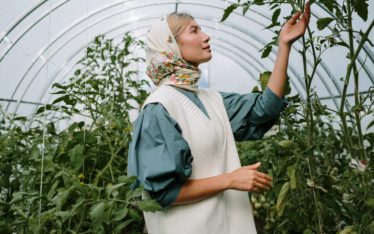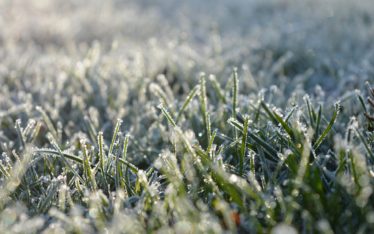Ah, in those earliest days of love how naturally the kisses spring into life! So closely, in their profusion, do they crowd together that lovers would find it as hard to count the kisses exchanged in an hour as to count the flowers in a meadow in May’
-Marcel Proust
One Man went to mow, went to mow a meadow….except he didn’t because it was no mow may!
‘No Mow May’ is a national campaign, first launched by the botanical charity ‘Plantlife’, encouraging people to not mow their lawns until June to help pollinating insects such as bees, butterflies or moths find more nectar. Not mowing, and letting your lawn grow wild for a few weeks, massively boosts the flowers and nectar availability. What we consider weeds, Dandelions are actually a super food for bees and butterflies! According to Biological Conservation research, since the 1930’s we have lost 97 % of wildflower meadows in Britain and many species of pollinating insects.
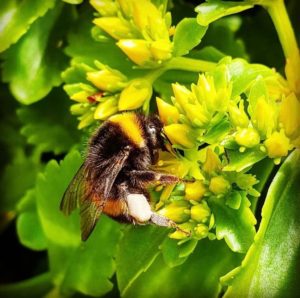
We as gardeners can do our bit to help these declines. Aside from letting our lawns grow free, and encouraging the biodiversity of weeds and other wild flowers that may appear, there are many plants that we can intentionally fill our gardens with to encourage these welcome visitors!
Bees love open single flowers that they can easily get to the nectar and pollen. Some great early summer plants that you can plant now are hardy geraniums. There are many varieties of these beautiful and vigorous perennials but a particular favourite is ‘Rozanne’. It flowers from July to October with vibrant purple faces and a bold white centre. It needs plenty of space as it spreads easily but great to divide after flowering to transplant to other areas.
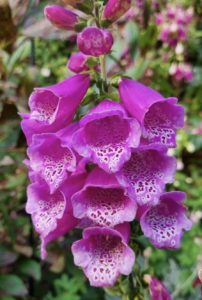
Bees love purple, they find the flowers more visible, and purple plants are often the greatest producers of nectar and pollen and Bees instinctively know this. A purple flower that is attractive to species of bees with long tongue is the Foxglove or Digitalis. Their dappled patterns literally guide the bees in to their tubular bells. The ‘Digitalis Purpurea’ is the Uk’s native foxglove and the cultivar ‘Sugar Plum’ has eye-catching pink blooms with deep purple centres. Hardy and beautiful, foxgloves will give your garden a wonderful ‘cottage’ look.
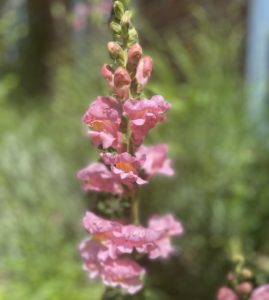
Antirrhinums or ‘Snapdragons’, so named due to the resemblance to the face of a dragon that opens and closes its mouth when squeezed at the sides, come in a range of heights and colours and flower from June to October. Half Hardy annuals can be easily sown from seed, their bell shape gives bees easy access to their nectar.
Buddleja is also known as the ‘Butterfly Bush’ and for good reason. They can’t get enough of it! Plant this in your outdoor space and wait for it to be filled with winged visitors. It spreads very easily and can grow very large so will need to be kept in check but there are dwarf varieties available for smaller spaces and can be grown in containers. They have a warm honey scent and spectacular blooms! Try ‘Black Knight’ for a large shrub with great impact. Like its name suggests, dark purple spikes of flowers draw the butterflies to its nectar.
Compact varieties such as ‘White Chip’ or ‘Blue Chip’ only grow to around two foot tall, perfect for patios but just as attractive to butterflies, bees, and all pollinating insects!
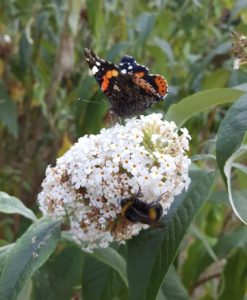
If your lawn is left natural and doesn’t throw up too many ‘weeds’ or you just fancy creating a wild and natural area, why not buy a widely available ‘wild meadow’ or ‘wild flower’ seed mix and scatter liberally. Inexpensive and low effort, these mixes will turn your patch into a rainbow meadow that pollinators will love you for. Sarah Raven at SarahRaven.com even has one called ‘Pollinator Meadow’ that features blooms to see you all year round such as Cornflowers, Forget-Me-Nots, and Yarrow amongst many others.
So, No Mow May, not only saves us getting the lawnmower out for a few weeks, but encourages us to think about sustainability and Eco-Awareness, rewarding us with beautiful flowers and a plethora of garden wildlife.
May the Force be with you!
‘If the bee disappeared of the face of the earth, man would only have four years left to live’
Maurice Maeterlinck, The Life of the Bee.
Written By: Nina Motylinski | Home & Garden Editor
Facebook: @LadyWimbledon
Instagram: @EyesOfLadyWimbledon
Twitter: @EyesOfLadyW




